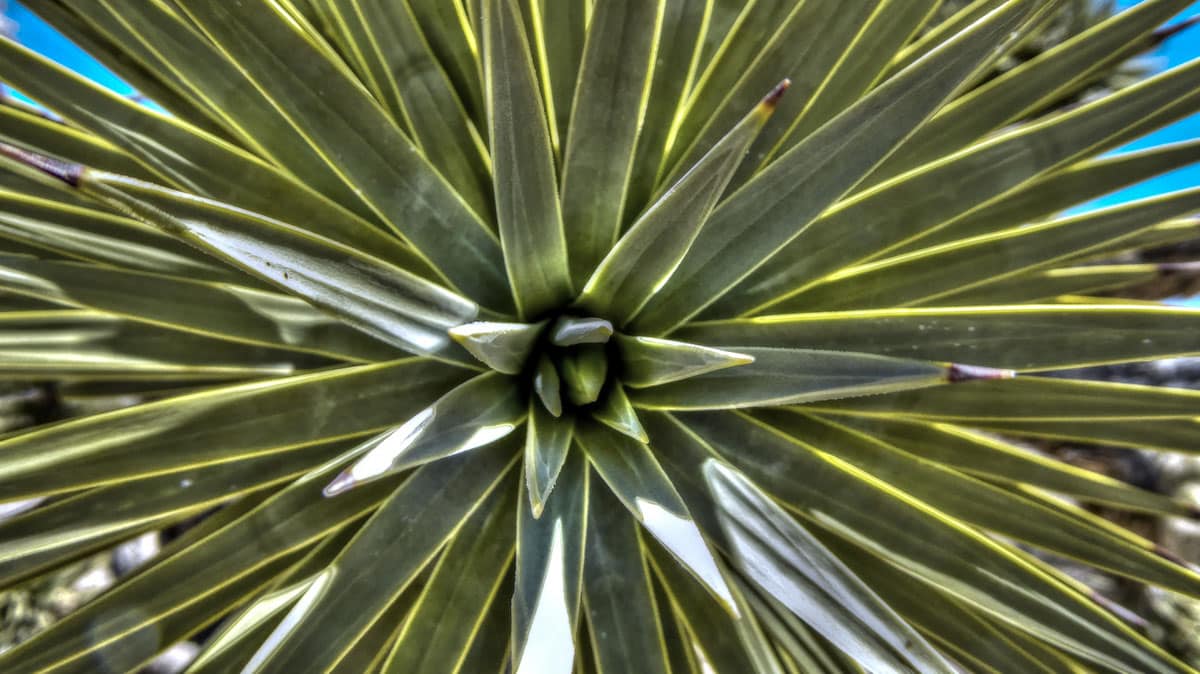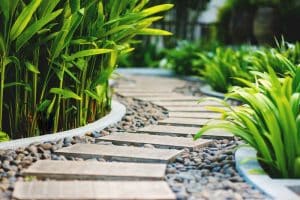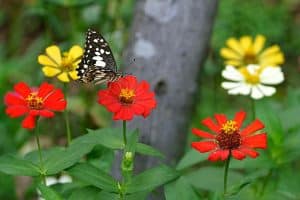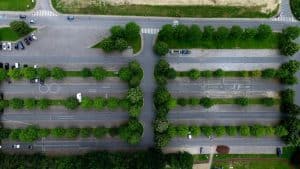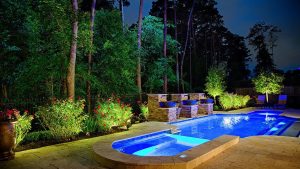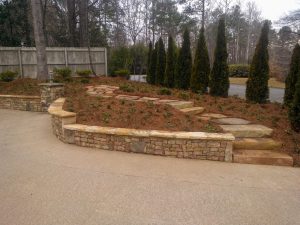Atlanta is known as “Hotlanta” for a reason. With average temperatures reaching ninety degrees during the summer months, Atlanta area residents are no stranger to steamy conditions. Unfortunately, those hot temperatures come with increasing growth and a limited water supply. Reducing demand is critical for long-term sustainability. How can the average property owner help? Consider installing drought resistant or drought tolerant landscaping.
Drought Resistant vs. Drought Tolerant Landscaping
Drought resistant and drought tolerant landscaping are important tools for water conservation. But what do those terms mean? When designing a landscape that can handle hot southern summers, it’s important to understand the difference.
Drought Resistant Plants
Drought resistant plants can weather periods of drought without suffering too much harm. Naturally hardy, these plants require only moderate water once established. Native plants, shrubs and trees are often drought resistant, as they’ve adapted to the growing conditions in the Atlanta area through natural evolution.
Drought Tolerant Plants
On the other hand, drought-tolerant plants have adapted to survive in unusually dry conditions. These plants frequently have deep root systems, succulent leaves, or waxy coatings that reduce water loss. Drought tolerant plants thrive in arid climates like deserts, or areas that can experience extreme heat and low moisture.
Drought-Tolerant and Drought-Resistant Plants for Zones 7-8
Metro Atlanta falls into USDA Growing Zones 7 and 8, depending on your location. These zones experience hot summers and relatively mild winters. That makes it easy to grow a wide variety of plants.
However, some plants that grow well in these zones require less water than others. These are a few of our drought resistant favorites:
- Blue Fescue: This ornamental grass forms compact blue-green tufts. It adds texture and color to your landscape.
- Autumn Sage: This perennial shrub produces vibrant flowers in shades of red, pink, or purple. It boasts a long bloom season and attracts hummingbirds and butterflies, adding beauty to your garden.
- Lantana: Lantana is a colorful flowering plant that comes in shades of yellow, orange, and pink. It is highly drought-tolerant, blooms all summer, and thrives in the hot sun.
- Yucca: Famous for its spiky foliage and tall flowering spire, yucca is tough as nails. Yucca tolerates high heat and low water with ease, making it a visually interesting addition to your landscape.
- Lavender: Well-known for its pleasant scent, healing and culinary qualities, lavender is as useful as it is attractive. Even better, this perennial herb thrives in dry conditions, making it an excellent choice for drought tolerant landscaping.
- Coneflower: This colorful herb sports an abundance of flowers that resemble daisies. Sun-loving coneflowers also attract pollinators. This makes them an eco-friendly addition to your garden.
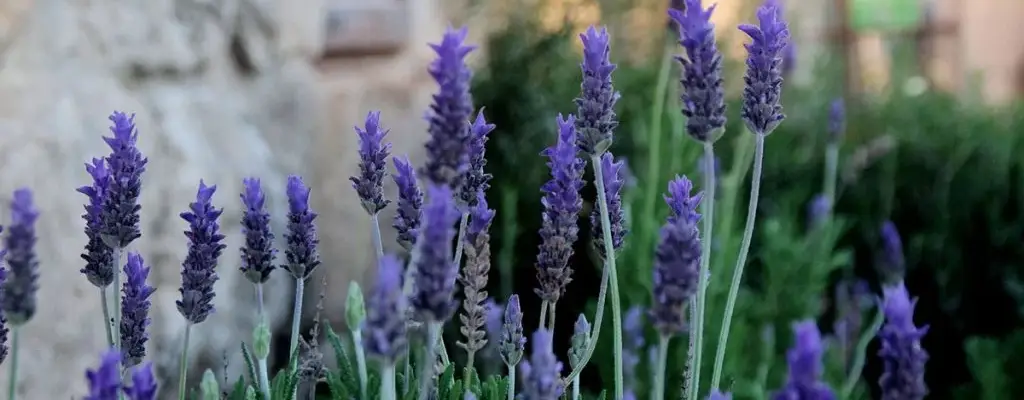
Incorporating Native Plants for Drought Tolerance
We’d never be able to list all the many drought resistant plant varieties that thrive in the Atlanta area. However, one of the best ways to create a conservation-minded landscape is to use native plants. Native plants are naturally adapted to our local climate. This makes them better suited to withstand dry periods. Here’s how you can incorporate native plants into your landscape:
Research Native Species
Identify native plants that thrive in zones 7-8, particularly those known for their drought tolerance. UGA has a great resource including native trees, shrubs and woody vines. You can also consult the Georgia Native Plant Society’s plant library or ask local nurseries or landscapers for advice.
Create Habitat Zones
Group plants with similar water requirements together to create distinct habitat zones. This allows for more efficient watering and ensures the survival of each species.
“Bee” Friendly to Pollinators
Native plants often attract pollinators like bees, butterflies, and birds, which contribute to a vibrant ecosystem. By choosing native flowering plants, you can support local pollinators while conserving water.
Additional Water-Saving Ideas
Aside from choosing native plants or plants with low water requirements, there are other ways to create drought tolerant landscaping.
- Reduce Your Lawn Space: Lush, healthy turf takes a lot of water to maintain. Consider converting some parts of your lawn to low water usage areas. Group drought resistant plants together or consider using a ground cover like creping thyme. Not only does it tolerate dry periods, but it also produces a beautiful carpet of flowers.
- Include Permeable Hardscapes: Loose stone pathways and patios allow water to penetrate the soil rather than running off. They also lessen the amount of water needed for irrigation by reducing softscaped areas.
- Apply a Layer of Mulch: Organic mulch installed at a depth of at least two inches helps to reduce evaporation, retain soil moisture, and suppress weed growth.
- Install Efficient Irrigation: Install drip irrigation systems or soaker hoses that deliver water directly to plant roots. This reduces water loss due to both evaporation and runoff. Additionally, a smart irrigation controller will adjust watering based on weather conditions.
- Collect Rainwater: Rain barrels attached to downspouts or rain chains are a great way to collect rainwater for later usage. You can also create a natural rain collection area by installing a rain garden in your landscape.
- Soil Improvement: Enhance soil quality by adding organic matter such as compost. Well-amended soil retains moisture more effectively, reducing the need for frequent watering.
Installing drought-tolerant landscaping will not only help the environment, but also save you money in the long run. By incorporating native and drought resistant plants and implementing water-saving ideas, you can create a beautiful outdoor space that thrives even in the hottest southern summers. If you have questions about landscaping in the Atlanta area or would like to schedule a consultation, contact Oasis!

